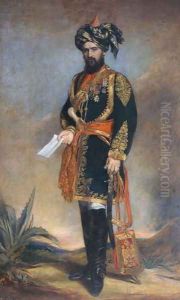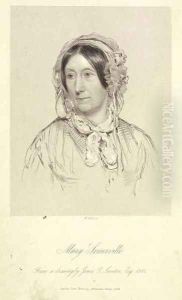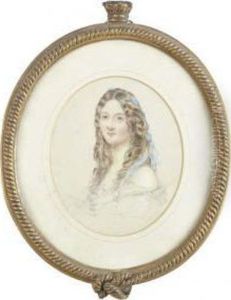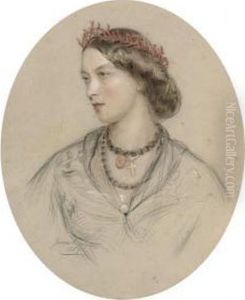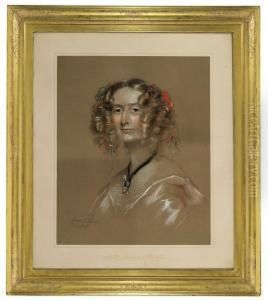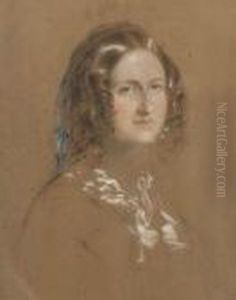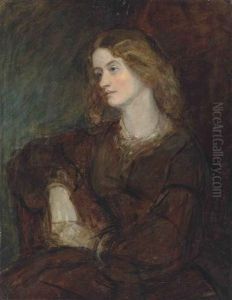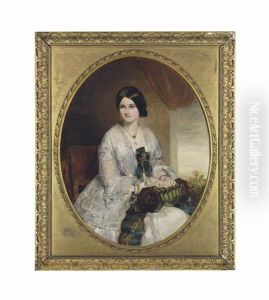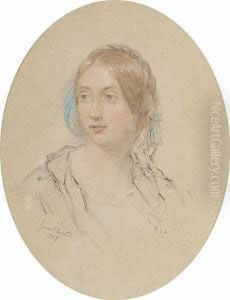James Rannie Swinton Paintings
James Rannie Swinton was a Scottish artist known for his portrait paintings and photography. Born in Edinburgh, Scotland, in 1816, Swinton developed an interest in art at a young age. He pursued his passion for painting and trained under Sir William Allan at the Trustees' Academy, which was one of the leading art schools in Edinburgh at the time. Swinton's early work was influenced by the Scottish artistic tradition, characterized by attention to detail and a somber palette, reflecting the often gloomy Scottish weather.
Swinton's career took a significant turn with the advent of photography. He became interested in this new medium, recognizing its potential to capture likenesses with a precision that traditional painting methods could not easily match. In the 1840s, he embraced photography and became one of the pioneering photographers in Scotland. Swinton was particularly noted for his calotype photographs, an early photographic process that used paper coated with silver iodide.
Throughout his life, Swinton continued to paint while also working as a photographer. His portraits were well received, and he gained recognition for his ability to capture the character and essence of his subjects. He exhibited his paintings at the Royal Scottish Academy and the Royal Academy in London. Swinton's dual talents in painting and photography allowed him to make a significant contribution to the visual arts during a period of rapid technological change.
James Rannie Swinton's impact on the field of photography is particularly notable. He was a member of the Photographic Society of Scotland and contributed to the development of photographic techniques. Despite his embrace of photography, he did not abandon traditional media, and his paintings remained sought after by patrons. Swinton died in 1888, leaving behind a body of work that reflects the transitional period in which traditional art forms were beginning to intersect with the technological innovations of the 19th century.
